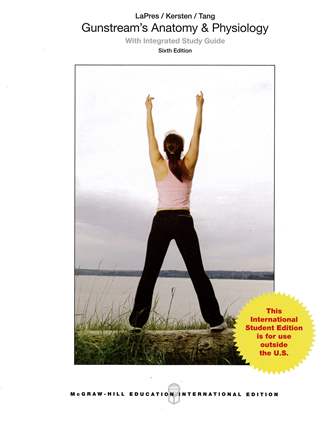書籍分類

Gunstream's Anatomy and Physiology: With Integrated Study Guide 6/e
作者:Jason LaPres, Beh Kersten, Yong Tang, Stanley Gunstream
原價:NT$ 1,250
ISBN:9781259254475
版次:6
年份:2016
出版商:McGraw-Hill
頁數/規格:564頁/平裝彩色
版次:6
年份:2016
出版商:McGraw-Hill
頁數/規格:564頁/平裝彩色
內容介紹 本書特色 目錄
- Description
Designed for an introductory, one-semester course, the scope, organization, writing style, depth of presentation, and pedagogical aspects of this text have been tailored to meet the needs of students preparing for a career in allied health. This text does not assume any prior science knowledge on the part of the student and effectively presents students with the fundamentals of anatomy and physiology.
It's the only one-semester text available with a built-in study guide/workbook.
A hallmark feature of this text is the author’s presentation of A&P concepts that are accurate, but presented at a level that is appropriate for virtually all students. The new author team highlights the relationships between structure and function of body parts and the mechanisms of homeostasis. In addition, interrelationships of the organ systems are noted where appropriate and useful. Without the excessive detail of some of the longer A & P texts, students can better comprehend key critical concepts in each important area of study.
Users who purchase Connect Plus receive access to the full online ebook version of the textbook.
分類位置:
理工 > 生命科學 > 生理學


